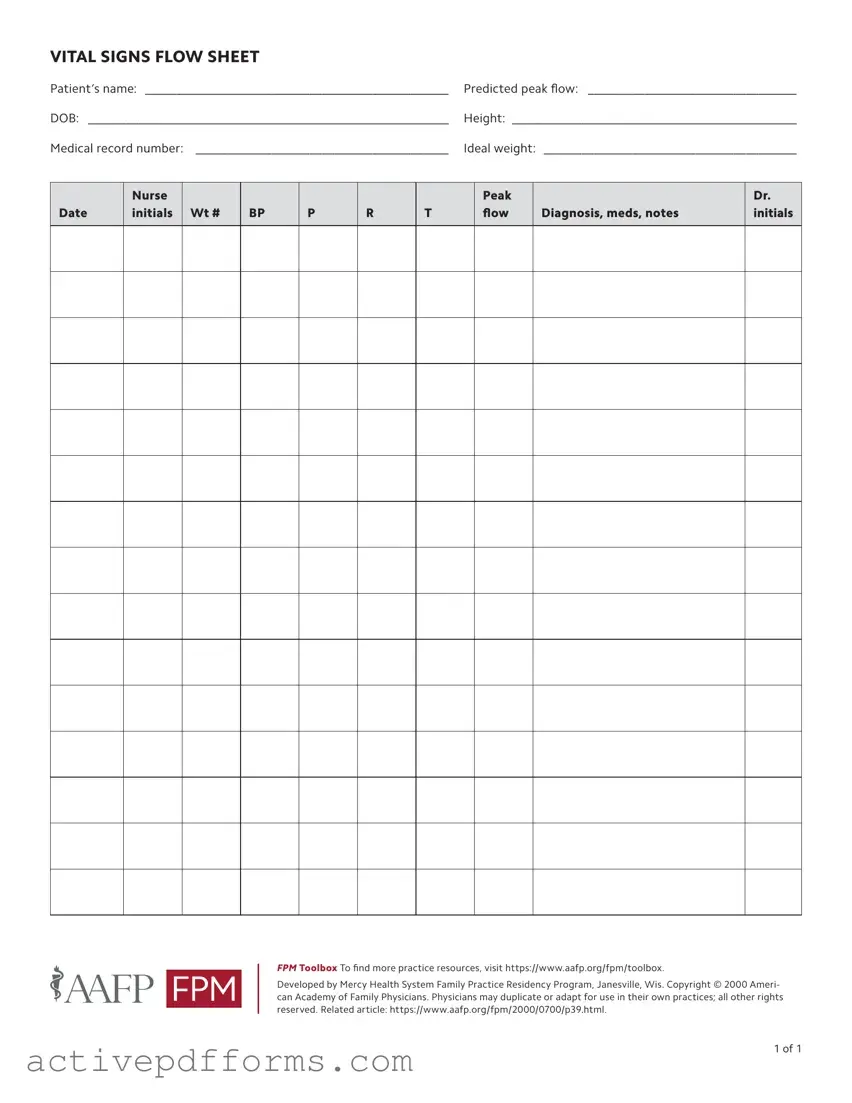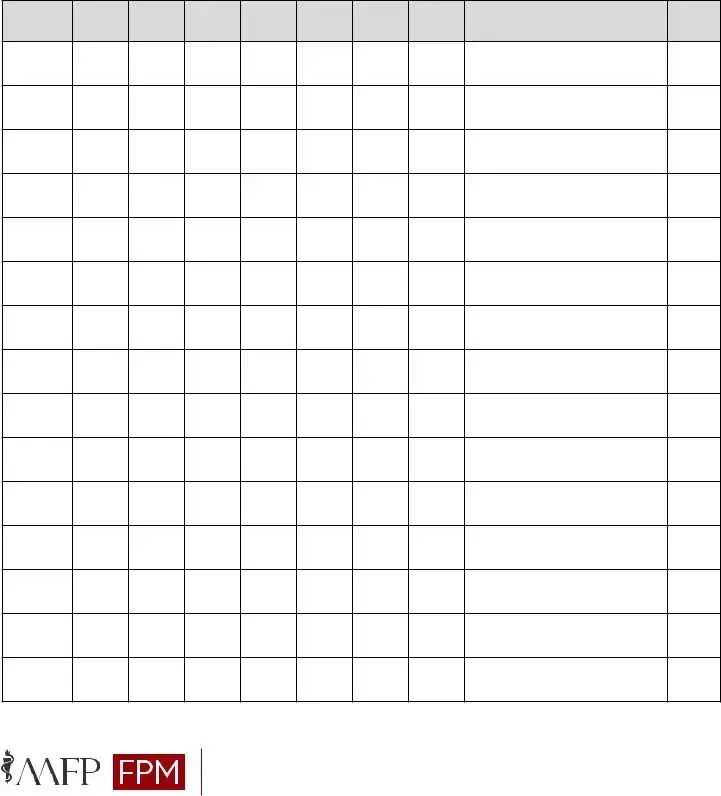Free Vital Signs Flow Sheet PDF Template
The Vital Signs Flow Sheet form serves as a comprehensive record that healthcare professionals use to track a patient's vital signs over time. It includes sections for patient identification, such as name, date of birth, and medical record number, alongside measurements such as weight, blood pressure, pulse rate, temperature, and peak flow. Developed by Mercy Health System Family Practice Residency Program and endorsed by the American Academy of Family Physicians, this tool is designed to improve patient care by organizing critical health information in an accessible manner.
Edit Vital Signs Flow Sheet Now

